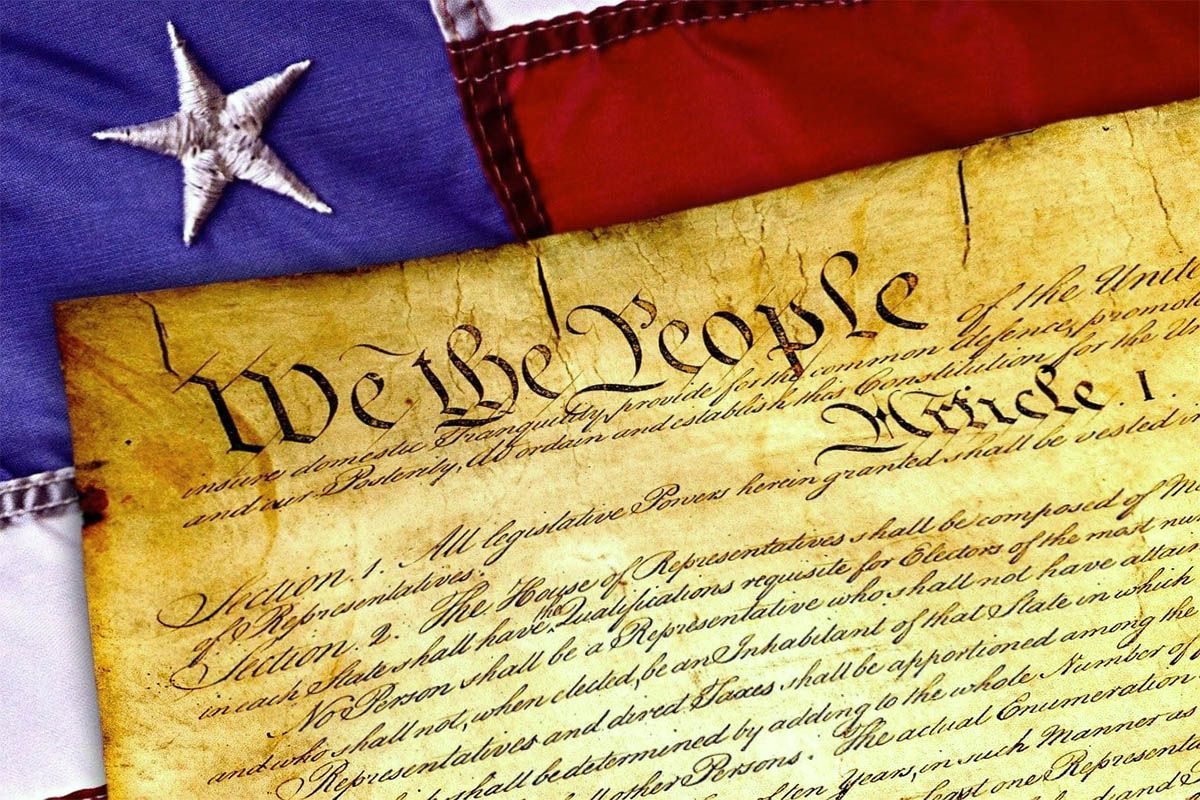Editor’s note: This article has been lightly edited for length and clarity.
Not very long ago, Salman Rushdie’s book, “The Satanic Verses,” enraged the Muslim world and threw many Muslims into a quandary. The intensity of Muslim anguish can be understood only by those who love their religion the way Muslims do. The West and the American media were quick to portray Muslim reaction in a negative light and suppress arguments that pointed to the real issue behind the controversy. The West projected itself as the bastion of intellectual, journalistic, and cultural freedom and the media was successful in conveying the impression that Americans make no compromise on the issue of freedom of expression. Americans boasted about free speech being enshrined in their Constitution. If Muslims had the real facts about the freedom of expression and the media practice of self-censorship, they would have met the challenge with greater confidence and poise.
Examples of Limits on Freedom of Expression
The Washington Post’s Richard Harwood writes in his Ombudsman column (April 1989) that, “The censorship of speech is even enjoying a certain popularity among students at various universities including Stanford, Michigan, Wisconsin and Emory.” He wrote that according to The New York Times, the students wish to banish “racist, sexist and anti-homosexual epithets, jokes and other kinds of harassment that occur in small-group settings, when one student intends to make others uncomfortable.” Thus, we see that a certain sensitivity to the feelings of others is re-emerging after the tumultuous 1960s when the students at the University of California at Berkeley demanded unfettered “free speech” including the right to say things that the authorities considered obscene.
The censorship of “commercial speech” is commonplace throughout the U.S. According to a Los Angeles Times study, at least 300 American newspapers have formal guidelines stipulating the kinds of advertisements that are not fit to print. Arguing against the First Amendment protection of speech such as paid advertising, Mr. Harwood says “there is nothing in the law or logic to require a newspaper to publish whatever garbage comes over the transom, or a network to put on air every foot of film, or recorded bite of sound available to it.”
He further says, “The idea of selection is a central idea and a necessity of the news business, the idea that human intelligence is at work in deciding what is and what is not to be published or broadcast… If we do not discriminate, if we have no values and render no judgments, it is a game for idiots.” The Surgeon General of the United States, C. Everett Koop, told a meeting of Roman Catholic doctors in Chicago, Illinois in September 1986 that, “The issue we take with pornography has nothing to do with the First Amendment. It seems to me that our country has never permitted or condoned speech that endangers the lives of others.”
The First Amendment, adopted in 1791, states that “Congress shall make no laws respecting an establishment of religion, or prohibiting the free exercise thereof, or abridging the freedom of speech, or of the press; or the right of the people peaceably to assemble, and to petition the Government for a redress of grievances.” In “Historical Dictionary of Censorship in the United States” (Greenwood Press, Westport, CT.), Leon Hurwitz says that the rights granted by this amendment are not absolute. In “The Law of Mass Communications: Freedom and Control of Print and Broadcast Media” (The Foundation Press, Mineola, NY: 1986; p. 345), Harold Nelson and Dwight Teeter Jr. tell us, “The statutes and court decisions say only those writings, pictures, statues and substances which are obscene lewd, immoral, lascivious lecherous’ libidinous, and so forth, may not be circulated in or imported into this nation.” A judge declaring a book obscene in a 1955 decision (The State of California vs David S. Alberts), said it was not necessary for him to read a book cover to cover in order to form an opinion. He said he had read it only to the point which was deemed obscene. This contrasts with the call of Mr. Rushdie and his supporters that “The Satanic Verses” should be read in its entirety before an opinion is formed about it.
Reverend Kenneth L. Dean, pastor of the First Baptist Church in Rochester, New York, commenting on Salman Rushdie’s book, said, “In recent years it has been suggested that what is obscene should be defined by the local community. In the international community, Rushdie’s book ought to be declared obscene. It is obscene because it is offensive to the human spirit and serves no good purpose.” Mr. Dean continued, “Freedom of expression does not permit exhibitionism in public for individuals. Somewhere in the world of writing books there is a line that gets crossed, and an author’s expression becomes exhibitionist. Rushdie crosses the line. He has a right to his thoughts and feelings, but it is not acceptable for all this to be strewn before the international community as legitimate debate. Sickness ought to be handled in the hospital, in the confession setting or in the psychiatrist’s office.”
The Impact of Muslim Outrage
Although the Western social scientists and media barons may not like to admit it, the echoes of the forceful Muslim response to Rushdie/Viking blasphemy are certainly being heard. People are becoming sensitive to blasphemy and use of abusive language under the garb of “freedom of speech.”
During the first half of 1989 alone, we have seen some moves toward redefining the American concept of “free speech.” On July 12, 1989, the House of Representatives voted to cut the proposed $171 million budget for the National Endowment for the Arts (NEA) by $45,000. The amount deducted had been spent on two controversial photography exhibits. The budget cut inspired the incoming president of the NEA, John Frohnmayer, to remark: “… I recognize that the $45,000 cut is a very clear signal from the House of Representatives and one that the NEA and myself personally would be ill-advised to ignore.” (The Washington Post, July 13, 1989). The controversial exhibits included an Andres Serrano photograph of a Christ-like figure in a container of urine, and the Robert Mapplethorpe show, which included a series of homoerotic and sadomasochistic pictures. The Corcoran Gallery of Arts in Washington, D.C. refused to hang these pictures and canceled the show. There were protests against the NEA, but they soon died down.
On April 4, 1989, Pepsi Cola announced that it had dropped its TV commercial featuring Madonna, following boycott threats from church members who had objected to one of her songs, even though the company had no connection with this production. The Washington Post, (April 13, 1989) reported that the superintendent of the U.S. Naval Academy ordered the destruction of 5,000 copies of a satirical student magazine designed as a parody of the notorious Playboy magazine. It was argued that the satire could be offensive to some on the campus. The next day, the newspaper carried a news item that Liberty University, a Christian educational institution, had expelled two of its students for airing a program on the campus radio station satirizing the chancellor. The list goes on. On the basis of the foregoing examples, it is doubtful how any informed and unbiased American would support “The Satanic Verses.”
The First Amendment puts some restrictions in the exercise of the freedom of speech. Muslims in the West and the United States have to know the facts and make their protests in a manner that takes into account both sides of the issue. Muslims have to also underscore the reality that some support the publishing of “The Satanic Verses” because it is inimical to Islam rather than because they think it has literary merits.





